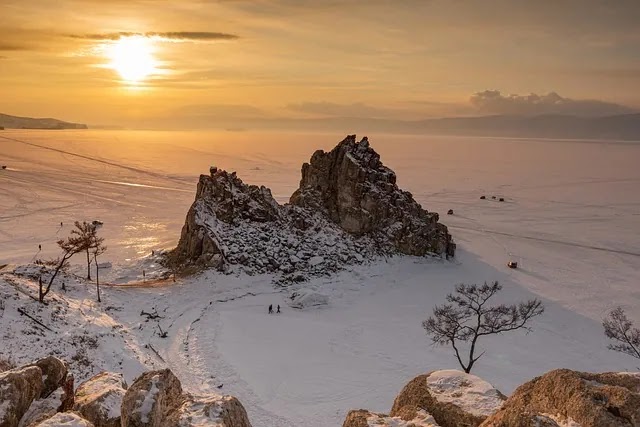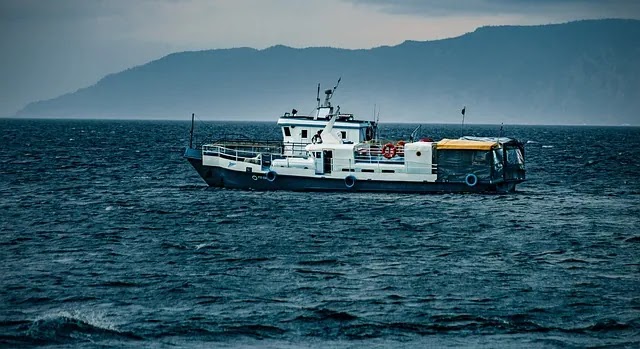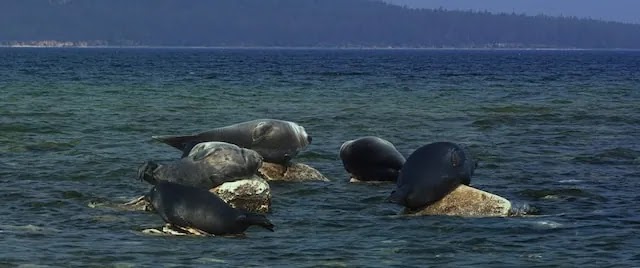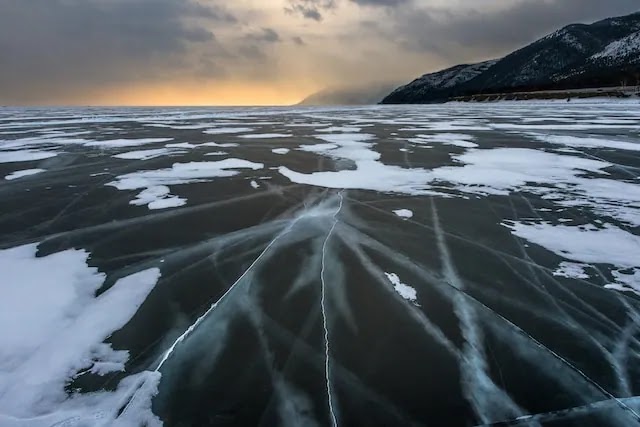
Do you know what is the oldest lake in the world? The famous Russian Lake Baikal region is the oldest reservoir in the world in southern Siberia, without any doubt.
It is also a beautiful and fantastic freshwater reservoir in the world. Scientists guess that this water is about 20-25 million years old.
The Russians call it Orejo Beykal or Baikal. The people named this reservoir Bai-kul in the Tiurisk region. It means rich lake in English.

It is also known as the Siberian Pearl. You will find the name of Baikal in general knowledge books as the deep reservoir on the Earth.
The reservoir is about 1,620 meters deep and covers an area of 31,500 square kilometers. However, the water reservoir is not unique in its antiquity and depth.
It is also the largest freshwater source on the planet earth. One-fifth of the world’s freshwater (23,000 cubic km) flows through this magnificent water reservoir.
The Oldest Lake in The World
This majestic reservoir is one of the most sacred in Russia. Miraculous stories surrounding this reservoir are also prevalent in many areas.
Especially in winter, when the water freezes and turns into ice, you will see a ring. Various legends were surrounding this ring at one time.
However, scientific research has disappointed believers in these theories. Scientists found when ice touches warm water, it forms a 6 km diameter ring.

However, various villages still consider this water as sacred. These villagers perform various rituals around the holy water source in different ways.
People have been living in this fantastic area in Siberia since ancient times. According to history, people first found this great place in the 6th century BC.
Historians talk about this historical site because it was a battlefield in a war. The war happened from 133 BC to 89 AD. The locals think Jesus visited this ancient reservoir’s area.
In 1643, a Russian citizen named Kurbat Ivanov was the first to enter the reservoir from Europe. Siberia was not part of the Russian Empire then.
Russia took over Siberia in the 1600s, making this water part of their empire. Now, how old is this lake? Science suggests that the lake is over 25 million years old.
The reservoir basin formed in a low area during an ice age. Tall mountains and forested hills surround the area. It also borders Irkutsk and Buryatia.
Geologists shared great facts about Baikal. It’s a beautiful place that shows the seaboards of North America, Europe, and Africa.

Millions of years ago, the seaboards started to separate. In summer, the ice in Siberia melts and fills the reservoir shores. The chest is transparent up to 39 meters deep.
The transparency is because of pure melted ice. The reason is also due to eating plankton dirt in the reservoir chest and the nonexistence of mineral salts.
So far, we have found twenty-six small islands in this large area. You cannot live on most of these islands. Some islands have noticeable human settlements.
The largest island, Alakhan, is 72 km long and has a population of about 1,500. Long ago, the earth moved and made mountains around the reservoir.
In most parts of Siberia, temperatures are much lower. However, the climate of this unique area is warmer. In winter, the temperature is usually -21 ° Celsius.
In August, it rises to 11 ° Celsius. During the summer, you can have fun outdoors in this area of Siberia. Hydrofoils and ferries take people to lakeside settlements.
Visitors can enjoy horse riding, hiking, and fishing. In winter, the water freezes, and ice roads form. People enjoy sledding, skiing, and skating.
If you’re feeling adventurous, you should visit the Khamar-Daban Mountains. South of this great water, they offer exciting travel opportunities.
Listvyanka is the most tourist-oriented town in the area. It’s a great base for your adventures in this region.
You can also enjoy the excellent market and museums there. The Baikal Museum lets you explore the depths.
Culture enthusiasts must visit the Architectural and Ethnographic Museum Taltsy. You can reach it using public transport, 20km from Listvyanka.
Fauna and Flora of This Attractive Place
This majestic Russian reservoir is rich in biodiversity. You will find more than 1,000 species of plants and 2500 species of animals in this place.
But the actual figures for both species are believed to be higher. More than 80% of the animals in this place are endemic.
Flora
The watershed of this magnificent place has many floral species represented. The marsh thistle is available here at the eastern limit of its geographic range.
Only a few underwater plants grow in the shallower parts of Lake Baikal Region. More than 85 species of submerged macrophytes are available in this place.
These include genera such as Myriophyllum, Ceratophyllum, Potamogeton, and Sparganium.
Mammals
Land animals like bears, wolves, foxes, and reindeer are available around the area. The park has many animals like deer, boar, squirrel, chipmunk, marmots, lemmings, and hare.

In the Early Middle Ages, European bison lived near the reservoir. The reservoir was the easternmost part of their habitat.
Birds
Nearly 236 species of birds inhabit this attractive place, 29 of which are waterfowl. The Baikal teal and Baikal bush warbler live in eastern Asia. However, their name is misleading.
Fish
There are two types of graying. They live in Baikal and in rivers that flow into it. Fewer than 65 native fish species dwell in the lake basin, but more than half of these are endemic.
The omul is endemic to this place and a source of income for many locals. Omul is a valuable local species for fisheries, an endemic whitefish.

People catch, smoke, and sell it in markets around the Baikal. Also, a second endemic whitefish inhabits the reservoir, C. baicalensis.
The Baikal black grayling, Baikal sturgeon, and Baikal white grayling are other species. They also have a significant commercial value.
Invertebrates
This magnificent place hosts a rich endemic fauna of invertebrates. Epischura baikalensis is a special zooplankton found only in this beautiful place.
It is the most common zooplankton, making up 80 to 90% of the total.
Scientists believe that epicureans filter about 1,000 cubic kilometers of water annually. It also means the lake’s entire volume every twenty-three years.
Climate
The weather here is better than in the nearby areas. The reservoir’s winter air temperatures are around -6 °F, and in August average 52 °F.

The surface of this magnificent lake freezes in January and thaws in May or June. The water temperature at the surface of this reservoir in August is between 50 and 54 °F.
It reaches 68 °F in the offshore shallows, and waves can be as high as 15 feet of this UNESCO World Heritage Site.
FAQ: Five Facts about The Oldest Lake in The World
One of the most amazing places on our wonderful planet, this lovely lake is stunning. This great reservoir in Russia has lots to offer for the people all over the Planet.
-
Why is Lake Baikal so deep?
This magnificent lake is deep cause it is in an active continental rift zone. The rift zone is widening at a rate of about 1 inch per year.
As the rift grows continuously wider, it also grows deeper through subsidence. So, this magnificent reservoir could become deeper than this time in the future.
-
Can you swim in the Baikal lake?
You can swim safely in this crystal clear water because its water is very pure.
The only drawback of swimming here is the temperature – even during the warmer months.
-
What is wrong with The lake baikal region?
This beautiful place is so big that often mistaken for the sea. This attractive reservoir is the deepest and oldest lake on the planet earth.
The largest freshwater reservoir has clear water and unique wildlife. This attractive place of the world has threats from pollution, poaching, and development.
-
Is Lake Baikal drying up?
The dramatic drying of the magnificent reservoir is causing tensions between the two regions that rely on it.
In the Buryat Republic, upstream of the lake, wells are running empty. The fishing areas of the industry are struggling with decreasing fish populations.
-
Why is Lake Baikal so clear?
This magnificent lake acts like a kind of treatment plant, turning out clear, pure water. The transparency of this reservoir changes depending on the quantity of sediment.
This magnificent reservoir gets the sediment from rivers and the growth of plankton. The transparency rate is low at the mouths of rivers and near them.
Conclusion
The artistic view of the Baikal and the crystal clear water are synonymous. The water of this reservoir is one of the purest and cleanest waters on the planet earth.
Lake Baikal region is a source of biodiversity. About 1,700 species of animals have made the reservoir area energetic.
Hundreds of species of plants are available in the vicinity of the reservoir. Most of the animals found here are endemic, and Baikal is a rich source for biologists and researchers.

A Bangladeshi entrepreneur. A person who loves nature, a web developer, and the founder of Srigal and Nehrin.